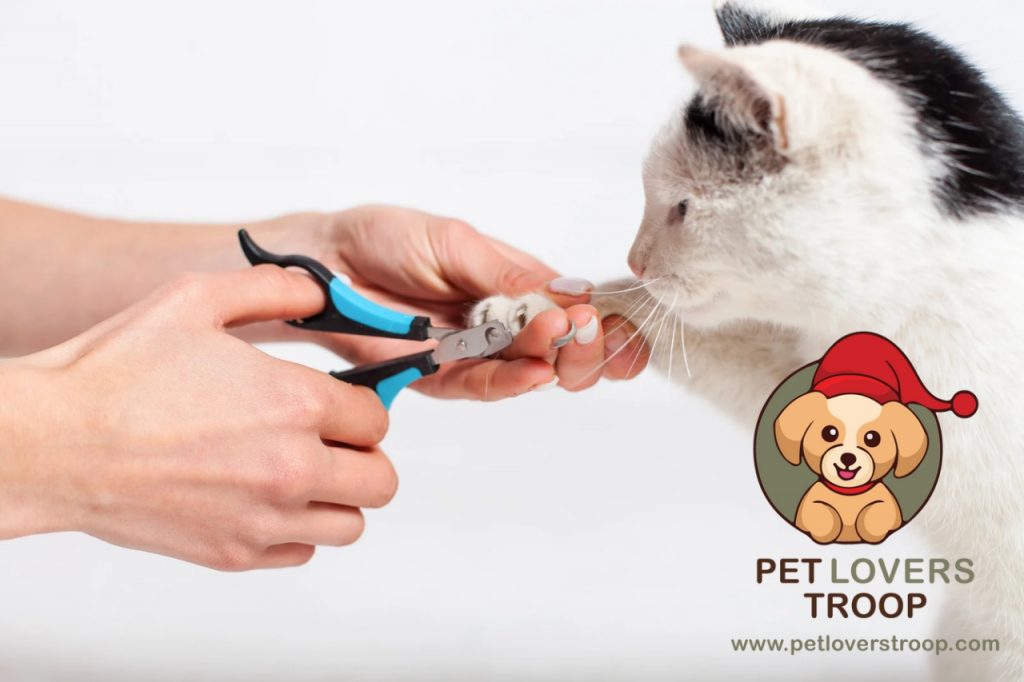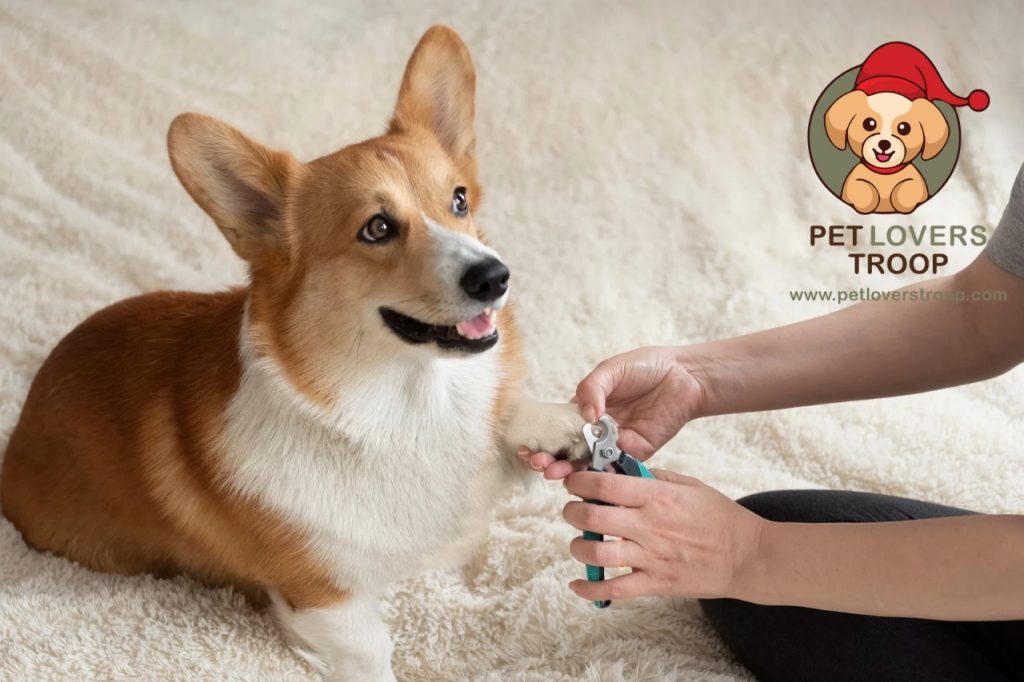Emma sat on her living room floor. She was listening to the soft clicking of Max paws across the hardwood. Each step echoed louder than it should. She winced and his nails were too long again. Last time, she paid Rs. 2500 for a grooming session that barely lasted 15 minutes.
Karen watched her grumpy Persian cat swat at her new curtain with his dagger-like claws. He’d torn through two cushion covers already this month. Every attempt to trim his nails ended in scratches on her and not him.
Emma and Karen weren’t alone. Pet owners are now learning that nail trimming for pets at home is doable with the right tools and tips. You don’t need to fear the clippers. You just need guidance. We’ll walk you through everything in this guide. We’ll use real life examples, highlight the latest advice, and answer key questions you’ve probably Googled more than once.

Why Home Nail Trimming For Pets Is Smart
Home nail trimming for pets at home is more than just a money saver. It’s a trust builder. It deepens your bond and allows your dog or cat to stay relaxed, away from noisy grooming salons and strange tools. Home grooming gives you control over timing, technique, and stress levels.
Vet visits for nail trims aren’t cheap and frequent trips can stress animals. Many pets associate clinics with pain or fear. But when nail care becomes part of your routine at home, your pet sees it as just another moment of care. Home trimming also lets you catch early signs of nail or paw issues like infections or cracked claws.
Regular checks mean early solutions. With practice, patience, and a proper setup, you can turn nail trimming into something normal. Something gentle and stress-free.
Read more: The Secret Benefits of Cat Grass: Why Your Feline Friend Craves It – June 2025
How to Trim a Dog Nails Safely
Many dog owners wonder how to trim a dog nails safely. The process can seem intimidating if your pup is squirmy or scared. It’s a calm and even bonding activity if done right. Set the right mood and don’t jump in with clippers. Let your dog sniff the tools. Touch their paws gently. Start with one nail.
Look for the “quick” pink area inside the nail where nerves and blood vessels sit. For dogs with light nails, it’s easy to spot. For darker nails, trim small sections at a time. Stop as the center of the nail looks gray or white. Use sharp and pet-specific clippers. Dull blades crush the nail and hurt.
If needed, use a file or grinder afterward to smooth edges. Praise your dog after every successful snip even if it’s just one nail. Training your dog for nail trims can take time. Positive reinforcement is key.
Read more: Why Does My Cat Knead? Understanding This Behavior – February 2025
Best Pet Nail Clippers for At Home Grooming
Choosing the best pet nail clippers for at home grooming can feel overwhelming. There are many types each with their pros and cons. Guillotine clippers are great for small dogs and cats. You insert the nail and squeeze the handle to slice. They’re fast and neat but require precise positioning.
Scissor-style clippers are ideal for larger dogs with thick nails. Their strong grip handles bulky claws with ease. Pliers-style tools offer control and are often used by groomers. Look for stainless steel blades.
A non-slip grip adds safety, especially if your pet wriggles. Some clippers include a safety guard to prevent overcutting. Emma tried two styles before settling on a curved blade clipper.
Max sat still longer once she found the right one. Karen uses tiny scissor-style clippers designed for kittens. With a sharp tool and good lighting, trims feel smoother and faster.
Read more: The Benefits of Regular Exercise for Cats
How Often Should You Trim Pet Nails?
Let’s talk about timing. How often you should consider nail trimming for pets. The answer depends on species and environment. But in general:
Dogs
Every 3–6 weeks. Dogs that walk on hard surfaces may need less frequent trims since cement naturally files nails down. But indoor dogs? They often need more care.
Cats
Every 2–4 weeks. Cats sharpen their claws naturally through scratching, especially older or less active cats. Watch for signs. If nails click against the floor, they’re too long. If they curl under, it’s past time.
Nails should not extend beyond the paw pad when your pet stands. Keeping a calendar helps. Regular trimming keeps the quick (that pink part inside) short and manageable. The longer you wait, the more quickly it grows and the less you can trim safely.

What Happens if You Don’t Trim Pet Nails?
Skipping trims? Wondering what happens if you don’t trim pet nails? The consequences go beyond aesthetics. Overgrown nails are painful. They can twist, crack, or break. They push into the paw pad, creating open wounds or infections. Long nails shift how pets walk.
This strains joints and muscles. The added pain can be debilitating for senior dogs or arthritic pets. Cats with long nails may scratch more destructively or accidentally harm their owners. Furniture, flooring, and even your skin pay the price. Karen learned this the hard way after Milo ripped a brand-new curtain during a zoomie session.
His claws weren’t just long they were lethal. According to the ASPCA, untrimmed nails are one of the top causes of orthopedic issues in aging dogs. Prevention is easy. A few minutes every few weeks saves you and your pet so much trouble.
Read more: Eclipse Safety for Cats: How to Keep Your Furry Friends Safe
Tips for Trimming a Cat’s Nails Without Stress
Cats are drama queens and kings when it comes to grooming. So if you’re looking for tips for nail trimming for pets without stress, here’s what actually works. First, start young if possible. Kittens learn fast. But older cats can still be trained. The secret is patience and routine. Trim nails after naps, when they’re sleepy.
Touch paws during cuddle time to build trust. Use soft voices and dim lighting. Clip just the sharp tip of the nail. Avoid the pink quick. If your cat pulls away, pause. Don’t force it. You can trim one paw per day. Karen found her rhythm after weeks of trial. Milo now allows one nail per treat. It’s slow but stress-free.
Some cats prefer being swaddled gently in a towel (a “purrito”). Others prefer being held upright on your lap. Cats love predictability. Keep tools and timing consistent. Over time, trims go from terror to tolerable.
Grinding vs Clipping Pet Nails: Which Is Better?
It’s the debate of the decade: grinding vs clipping pet nails: which is better? Both methods have downsides. Clipping is faster. One snip and it’s done. Less noise, less fuss. But it risks splintering nails or cutting the quick if you’re not careful. For pets with thick or black nails, visibility becomes a challenge.
Grinding takes longer, but it’s gentler. It sands the nail down gradually, leaving smooth edges. Grinders reduce the chance of splitting. They’re great for older pets or nervous owners. But grinders are noisy. Some pets hate the sound or vibration. It takes acclimation. Start slow.
Let your pet hear and sniff the tool before using it. Emma started with clippers. After one bad cut, she switched to a grinder for finishing touches. Max tolerated the hum with practice. Now his nails are neat, and his walks are quieter.
Read more : Unveiling the Unique Personality Traits of Persian Cats: A Comprehensive Guide to Care-January 2024
How to Stop Bleeding if You Cut a Pet’s Nail Too Short
You trimmed too far and now you’re panicking. Don’t worry. Many pet parents need help with how to stop bleeding if you cut a pet’s nail too short. First, stay calm. Press styptic powder (or cornstarch) onto the nail. Hold pressure for 30 seconds. Most bleeding stops quickly.
If you don’t have powder, use a flour paste or a clean gauze wrap. Keep your pet still. Distract them with cuddles or treats. Don’t let them lick the wound. Monitor the nail for 24 hours. If bleeding returns or your pet limps, call your vet. One slip doesn’t make you a bad owner. It makes you human. Emma once clipped Max’s dew claw too far.
He yelped. She cried. But with styptic powder and hugs, he was fine in minutes. Lesson learned. Always trim in good lighting and keep powder nearby.

Personal Success Stories
Every pet is different. Every journey is unique. But success happens with patience. Emma now trims Max’s nails monthly. No groomer needed. Max even offers his paw for treats. Karen trims Milo’s nails in four sessions.
No more ruined curtains and more scratches. Just soft paws and calmer pets. Other owners echo the same. Ali, who owns two Labradors, grinds nails weekly during Netflix nights. Aaliya trims her rescue kitten’s claws with music playing. Calm energy changes everything.
Conclusion
Nail trimming for pets is achievable and incredibly satisfying. It improves the relationship between you and your pet. It also lowers stress levels and saves money. The secret is calm consistency, whether you use clippers or grinders and cut once a week or once a month.
Keep an eye out for overgrowth indicators. Always use the appropriate instruments and make use of decent lighting. Do not do anything hastily. Home grooming isn’t just about saving money. It’s about giving your pet dignity. Comfort. Confidence. Happy paws mean happy walks, happy furniture, and happy homes.
Your hands can offer more than love that they can offer relief. Make nail care part of your routine. Watch your pet thank you with every quiet and comfortable step.

